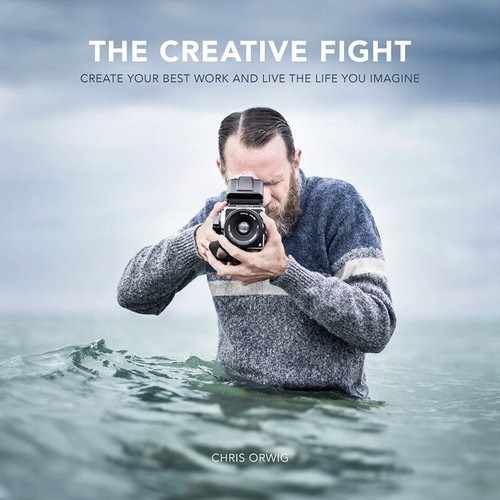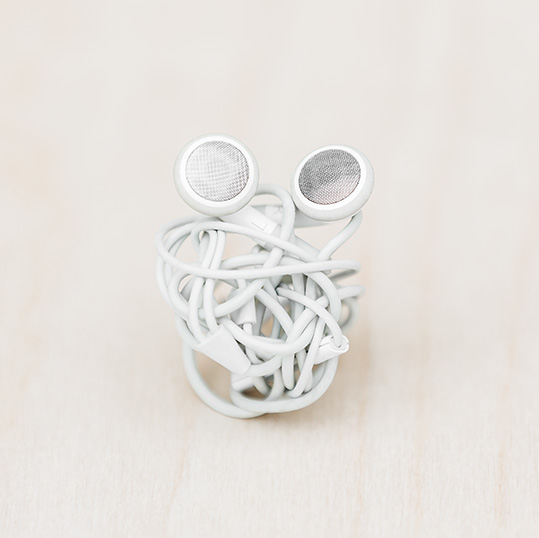Chapter Twenty-Five. Picture Perfect

Picture-perfect creativity doesn’t exist. That’s why perfectionists have a tough time getting their creative juices to flow. Perfectionists like to control, but creativity likes to be free. Creativity is inherently uncertain and unknown. It’s like the experience of driving at night—you have to trust that the lights will illuminate enough of your path, knowing that the whole road will never be clear. You have to trust that you’ll see just enough in order to make it home. And so creativity requires a mixture of faith, confidence, conviction, and hope. It’s not a religious faith but a faith that looks at the world with optimistic eyes. The uncreative person doubts that anything meaningful can be done. The creative soul is convinced that a solution can be found, that beauty exists, and that we can make the most of what we have.
Creative Optimism
Some think of my friend Steve as a creative genius for what he makes and how he works. I once asked him his secret to his success and he said, “My passion is fueled by creativity. And my creativity is fed by optimism.” It’s that mix that keeps Steve afloat. Most people think of optimism as shallow or naive, but that’s the opposite of Steve. His optimism is grounded in reality, and this helps him see what others overlook. Rather than thinking of the glass as half full or half empty, he notices the pitcher and the fresh water stream. Steve is a creative optimist. Such people believe that more exists, and they don’t see the world through a scarcity lens.
As the old story goes, there are two types of people. One type says, “Life is like an apple pie. There are a limited number of slices. Get your slice before it’s gone.” The other type says, “Life is like an apple pie. There are a limited number of slices. Get your slice before it’s gone. And when all the slices are gone, let’s bake another pie.” The second type is a maker, baker, and creative genius who not only improves his own life but the lives of others as well. This person isn’t naive, but rather is stubborn in the belief that the goodness doesn’t run out or expire.
Believing that more is possible is a mind-set that helps when facing problems that resemble a tangled mess. Pulling harder against such problems only makes them worse. Like the tangle in your iPod earbuds cord, pulling more forcefully only makes the knot worse. The only way to undo such a problem is to slow down, relax, and lightly untangle the snarled mass. That’s exactly what Einstein did when he was tangled up in complex thoughts.
MY OPTIMISM WEARS HEAVY BOOTS AND IS LOUD.
— HENRY ROLLINS
Untangled
When Einstein was just 26, he was working 40 hours a week as a patent examiner. After hours, he worked on theories of his own. It was during this time that he came up with his most groundbreaking work. With so little time to devote to his own work, how did he manage to untangle so many knots? Einstein explained, “The theory of relativity occurred to me by intuition, and music is the driving force behind this intuition. My parents had me study the violin from the time I was six. My new discovery is the result of musical perception.” Throughout his life, music was a refuge and a source that helped him think.
Einstein once said, “If I were not a physicist, I would probably be a musician.” It was known that Einstein loved to play music and that he used it to unwind. As musician Jack Liebeck reflected, “He used music to clear his mind while it was twisted up with all these tortuous concepts. The violin helped him to stand back from the problem and crystallize his thoughts.” Einstein’s own kids said that their dad often used music as a way to figure things out. Einstein even attributed some of his greatest breakthroughs to taking violin breaks. He believed that these breaks connected different parts of his brain in new and unlikely ways. Later in life Einstein bought a sailboat that he named Tinef, which is Yiddish for “worthless” or “junk.” Einstein loved to take breaks from his academic life to sail so that his thoughts could drift freely as he was pushed along by the wind.
Taking a break from a difficult problem can seem like a counterintuitive thing to do, but that is exactly what creative geniuses do. They give the problem some space rather than wrestle it to the ground. Just like the knotted earbud cords, some problems need to be handled with a lighter touch.
One of the reasons Einstein’s violin breaks were so effective is that he had been playing the violin since he was a kid. He was a good musician who loved the process of playing and the resulting sound. His muscle memory was deeply embedded, and playing the violin became a way to relax. For you or me, playing the violin might be the absolute worst thing to do. The screeching sounds and ensuing frustration probably wouldn’t help our creativity to flow. But what might help is to go for a walk.
Unleashed
Sometimes we have to unleash our minds from the shackles of deep thought—just like with our family dog Daisy. She has the most fun when I unhook the leash and she runs free and wild. I let her run off leash as often as I can. Perfectionists have a hard time believing that unhooking the leash is worth the risk. What if the dog runs away and never comes back? What if it’s just a waste of time? But letting go is exactly what needs to happen if we want our creative capabilities to grow.
I went to college at the University of California Santa Barbara (UCSB), and my first-year dorm room was just steps from the ocean. UCSB is situated in one of the most beautiful places in the world. Upon hearing that I attended a school in such an idyllic place, many friends would say, “I could never go there. I wouldn’t get anything done!” I found the opposite to be true. Being surrounded by beauty was a motivation to work hard and then to take refreshing breaks. The breaks consisted of running on the beach, surfing, or mountain biking up in the hills. And it was during those sessions that my most creative ideas flowed. This experience wasn’t mine alone. It was shared by my peers, and it was even scientifically supported by research done by one of the school’s faculty.
Jonathan Schooler, a PhD and a professor of psychological and brain sciences at USCB, has devoted his career to studying how we arrive at more creative thoughts. Schooler is a world leader in cognition and creativity. One of Schooler’s findings explains that “disciplined mind wandering” leads to better ideas. As a result, he goes for a daily walk along the ocean’s edge in order to clarify his ideas. Schooler’s research suggests that when we let our mind “run off leash” we are able to make and connect new ideas. Schooler’s discoveries are based on something artists have known for years: creativity cannot be forced. And these ideas aren’t just relevant for California dreamers who want to get their creative juices to flow.

David Berkus is an economist and venture capitalist who agrees with Schooler’s approach. The way he sees it, “When you work on a problem continuously, you can become fixated on previous solutions.” This makes the problem worse because the fixation limits our ideas. But when you take a break it allows the mind to relax and for the old solutions to fade. As Berkus puts it, “This frees the mind up for eureka moments to occur.” Regardless of your line of work, whether you’re an academic, an architect, or a financier, breaks can lead to substantial breakthroughs.
WHAT WE NEED IS MORE PEOPLE WHO SPECIALIZE IN THE IMPOSSIBLE.
— THOMAS ROETHKE
Yet arriving at eureka moments isn’t as simple as stepping away. According to Schooler’s research, what you do on your break matters. He found that mind wandering is most productive when we do something that isn’t too difficult or too dull. That’s why going for a walk or hike can provide just the right context for creative ideas to grow. For Einstein it was playing the violin or going for a sail; for me it is getting out on my bike. The key is to identify what activities help your creativity to thrive and then to consider these activities as part of your job.
Exercise
STEP 1
Identify three activities that allow your mind to rest without completely drifting away:
1.______________________________________________________________________________
2.______________________________________________________________________________
3.______________________________________________________________________________
STEP 2
Follow Einstein’s footsteps and take a few minutes this week to use one of those activities as a way to untangle your ideas.


